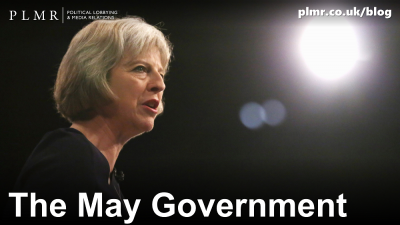Following the withdrawal of Andrea Leadsom from the Conservative leadership contest this morning, we will have a new Prime Minister by Wednesday evening. First task on Theresa May’s to do list will be forming a Government and naming a Cabinet.
There could be one more ‘big job’ than usual to fill in this reshuffle if, as expected, Prime Minister May opts to appoint a dedicated Cabinet Minister to lead on Brexit negotiations. Almost certainly a job for a leading Brexiteer – especially given that May herself backed Remain – this post could go to Chris Grayling. Grayling was May’s campaign manager and, by popular consent, is deemed to have ‘had a good referendum’. However, other leading Brexiteers such as Michael Gove and Liam Fox could also be in contention. Both threw their support behind May when their own leadership campaigns stalled and both would expect to prosper in a May Cabinet, though they may have to settle for the Home Office and the Foreign Office respectively.
There is a large pool of potential Chancellors for May to pick from. Sajid Javid has long been talked of as a future Chancellor and was being lined up for the post if Stephen Crabb had won the leadership. Current Foreign Secretary Phillip Hammond will be anxious to move to a new brief and is regarded as a safe pair of hands and, having a background in business and past experience in the Conservative Treasury team in Opposition, he could be the man to soothe the City’s jitters. Chancellor could be another role that could be given to Michael Gove (it is rumoured that being Chancellor was one of Gove’s conditions for backing Boris Johnson initially) though Andrea Leadsom also coveted the role. If May did appoint Leadsom as Chancellor it would send a clear signal about the party reuniting under May’s leadership as well as breaking one of the Cabinet’s last glass ceilings.
Appointing Penny Mordaunt as Defence Secretary would shatter the final glass ceiling – though expecting Theresa May to appoint a much greater number of women than Cameron did could be misguided. Margaret Thatcher was famous for promoting very few women during her premiership, especially to Cabinet so it is not automatic that a female PM advances the cause of feminism. Also May faces the same dilemma in achieving a balanced Cabinet that defeated Cameron: a lack of talent in sufficient numbers on the Conservative benches. Of the 330 Conservative MPs in Parliament today, just 68 – roughly 1 in 5 – are women. Whilst a fully balanced Cabinet is unlikely in this reshuffle, we should expect to see an increase in the number of female ministers and whips outside Cabinet as the 2015 intake start to move up the ranks.
It will be interesting to see what Theresa May does with two of the party’s big beasts: George Osborne and Boris Johnson. Both men find their own leadership ambitions in tatters. Boris Johnson does not enjoy the closest of relationships with Theresa May – they frequently clashed when he was Mayor of London and she made a point of attacking his reputation when she launched her leadership bid – but it is also hard to imagine a Tory Cabinet without him. Perhaps Boris will be given a role where his popularity can be harnessed without him actually wielding too much power. He would certainly make a good Party Chairman, Leader of the Commons or Culture Secretary but we shouldn’t expect to see him become Northern Ireland Secretary!
Although George Osborne enjoys friendlier relations with May than Boris does, he will struggle to stay as Chancellor of the Exchequer in the new Government. Not only did be back Remain, his botched threat to introduce a ‘punishment budget’ if the UK voted Leave during the referendum campaign led to a revolt by Tory backbenchers and seriously tarnished his reputation. He is also one of the biggest figures from the Cameron Government, from which May will seek to distance her new administration. If Osborne does remain in the Government, it will almost certainly be with a different portfolio.
Osborne will not be the only member of the current Cabinet concerned about their prospects. The vast majority of Cabinet Ministers (particularly those that supported Remain in the referendum) backed May and they will expect their support to translate into either a promotion or, at the very least keeping their jobs. But May will be keen for her Government to represent a fresh start from Cameron’s and she needs to make sure that senior pro-Brexit figures are given big roles. Undoubtedly there will be casualties and the axe is likely to fall first on the ‘male, pale and stale’ – just as it did in Cameron’s last two reshuffles.




